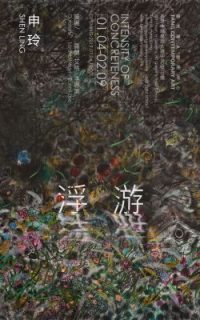标签为 “维也纳” 的文章
-
欧阳春——凡夫俗子 | 个展
2019.02.22 · 发表评论香格纳画廊将于2019年3月16日荣幸呈现欧阳春个展《凡夫俗子》,展出这位来自北京的艺术家近两年创作的三十余件装置作品。他从近期拆迁的大学家属楼中收集居民们的废弃家具和生活旧物,并以实物装配的形式赋予这些材料全新面貌。展览将持续至4月28日。
-
申玲个展——浮游 (个展)
2019.01.01 · 发表评论当代唐人艺术中心荣幸地宣布将于2019年1月4日,在香港空间首次呈现艺术家申玲的个展《浮游》。展览由知名策展人罗兰・艾格及李恩美担任策展人。《浮游》将突出申玲的图像世界,这是基于她对人性的复杂所产生的敏感、诗意与同情的理解。
-
Weekend Reading List: As Brazil’s Far-Right Takes Power wi …
2018.12.25 · 发表评论The importance of art classes; Egon Schiele’s legacy and Hito Steyerl’s favourite films: what to read this weekend – 艺术课的重要性;伊冈·希尔的遗产和海藤·斯蒂尔最喜欢的电影:这个周末读什么
-
Wes Anderson and Juman Malouf’s Curatorial Debut in Vienna …
2018.11.15 · 发表评论‘Every passion borders on the chaotic,’ wrote Walter Benjamin in his essay ‘Unpacking My Library’ (1931), ‘but the collector’s passion borders on the chaos of memories’. The collector of books, artworks, or miscellaneous trinkets, Benjamin thought, is at the mercy of the sheer variety of things out there. Once part of a collection, however, the collector relives their love for those things just by looking at them. – 沃尔特·本杰明(Walter Benjamin)在他的文章《解开我的图书馆》(Unpacking My Library)(1931)中写道:“每种激情都近乎于混乱,但收藏家的激情却近乎于记忆的混乱。”本杰明想,收藏书籍、艺术品或杂项小饰品的人,完全听任各种各样的东西摆布。然而,一旦收藏品的一部分,收藏家通过看它们来重新体验他们对这些事物的热爱。
-
Weekend Reading List: #MeToo Makes the Power 100 – …
2018.11.09 · 发表评论Wes Anderson and Juman Malouf’s show opens in Vienna; conspiracy theories at the Met during the Midterms and Shanghai’s psychedelic cat – 韦斯·安德森和朱曼·马卢夫的秀在维也纳开幕;大都会中期赛期间的阴谋论和上海的迷幻猫
-
One Take: Lydia Ourahmane’s Two Gold Teeth – 一拍:L …
2018.11.01 · 发表评论A tooth in the right side of Lydia Ourahmane’s mouth had always given her trouble. Seven or eight years ago, she had a disastrous root canal and the tooth, a maxillary molar, never really recovered. Around the time Ourahmane graduated from Goldsmiths, London, in 2014, with an undergraduate degree in fine art, she was driving out of town in a friend’s van. They had taken their lunches with them to eat on the road. Ourahmane took a bite – she can’t recall what she was eating that day but she remembers that it was soft – and the tooth, always bothersome, loosened completely and fell out into her food. There was only a stump of it left in her mouth. She later had to have it extracted, leaving a sizable gap. – Lydia Ourahmane嘴巴右边的一颗牙齿总是给她带来麻烦。七年或八年前,她有一个灾难性的根管和牙齿,上颌磨牙,从来没有真正恢复。大约在2014年,欧拉曼从伦敦戈德史密斯大学毕业,获得美术本科学位的时候,她正开着一辆朋友的面包车出城。他们带着他们的午餐在路上吃。欧拉曼咬了一口——她想不起那天吃了什么,但她记得那是软的——牙齿总是很烦人,完全松动了,掉进了她的食物里。她嘴里只剩一根树桩。她后来不得不把它提取出来,留下了相当大的缺口。
-
独自一人:互联网的超链接结构如何塑造我们的情感生活
2018.10.19 · 发表评论“互联网也不是一个坏主意,但它确实具有毒性作用”“Facebook的工作”她指出,“不仅仅是给你信息,而是让你保持在那儿,处于一种积极的瘫痪状态。”
-
Female Patrons Throughout History – 历史上的女性赞助人
2018.10.19 · 发表评论For more than 3,000 years, patronage of art and architecture has been a noteworthy path for women’s agency and self-expression. Over recent decades, patronage studies – which bring together issues of personal and group identity, political power and cultural production – have come to occupy a significant place in the history of art. It is well known that, in many cases, informed and intelligent patrons took an active role in shaping the character of the works they commissioned. The English term ‘patron’ comes from the Latin patronus (protector of clients or dependents, specifically freedmen), which is, in turn, derived from pater (father). Thus, the term ‘patronage’ is inherently gendered and, in nearly all cases, female patrons worked within the limitations of patriarchal societies. Yet, from Antiquity to the present day, women have requested (and collected) works of art and have commissioned buildings and urban interventions. It is important to stress that the patronage systems of the past were based on social stratification and inequalities in power and economic standing – so, in general, patronage by both women and men was the province of elites, who had the means to extend commissions. Some art historians have used the neologism ‘matronage’ when discussing women patrons but, along with most scholars working on the topic today, I prefer to use the traditional – albeit gendered – term patronage. – 3000多年来,赞助艺术和建筑一直是妇女自我表现和代理的重要途径。近几十年来,赞助研究——将个人和群体身份、政治权力和文化生产等问题结合在一起——在艺术史上占据了重要的地位。众所周知,在许多情况下,知情和聪明的赞助人在塑造他们委托的作品的性格方面起到了积极的作用。英语术语“patron”来源于拉丁语的patronus(客户或受抚养人的保护者,特别是自由人),而后者又来源于pater(父亲)。因此,术语“赞助”具有固有的性别,在几乎所有情况下,女性赞助人在父权社会的限制下工作。然而,从古代到现在,妇女已经要求和收集艺术品,并委托建筑和城市干预。必须强调的是,过去的资助制度是建立在社会分层、权力和经济地位不平等的基础上的——因此,一般来说,男女资助都是精英阶层的所在地,精英阶层有扩大佣金的手段。一些艺术历史学家在讨论女性赞助人时,使用了新词“主客观”,但与大多数学者讨论今天的话题相比,我更喜欢使用传统的——尽管是性别的长期赞助。
-
Whitney Biennial 2017 – In Pictures – 惠特尼双 …
2018.08.05 · 发表评论Opening this Friday, a first look at the 78th edition, curated by Christopher Y. Lew and Mia Locks – 打开这个星期五,第一次看第七十八版,由Christopher Y. Lew和米娅锁






























